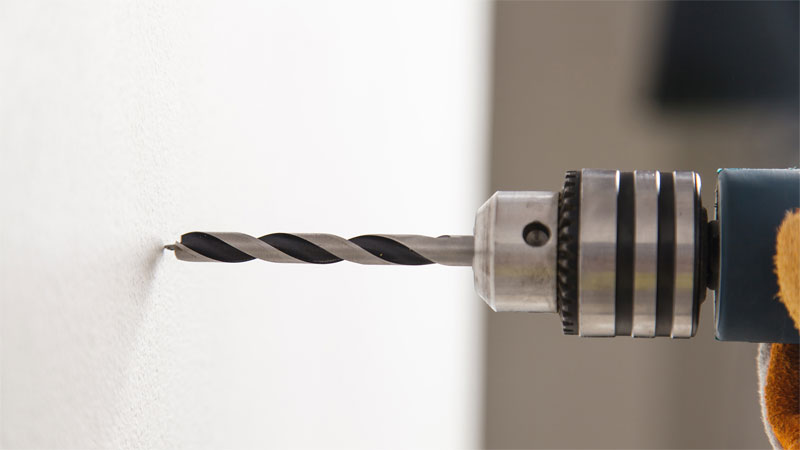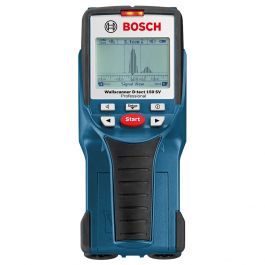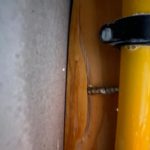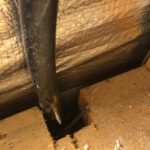
How to find or detect pipes in walls
A decent water line and electric wiring network is basically the backbone of a well-manufactured house. Water pipelines serve the role of distributing hot and cold water around the house and also act as a vent and drain system. These water pipelines reside behind the walls and in order to fix any leak or to proceed with any kind of home renovation plan, it is important to find the exact location of these pipes.
Why do we need to find the pipes in walls?
Under normal circumstances, you will never find it necessary to know the exact location of pipes in the walls of your house.
But if you are a professional or a fanatic do-it-yourself plumber and you are planning to drill holes in the walls, you must find the best spot so as to avoid any kind of damage to the pipes and wire network in the walls
There are mainly two or three events when you will need this information.
- If you suspect that there is a leakage in one of the walls due to the rust or any other unknown reason. In order to fix that leak, you will need to find the exact location of the pipeline in your house.
- If you are planning a house improvement or renovation project.
What can happens is you drill into a wall without checking?
If you drill into a wall without checking, it can lead to serious damage to the pipeline. Damaged pipes cause water leak in the pipelines eventually leading to very costly damage or you can end up hurting yourself. More harmful can lead to hidden water leaks that you would not notice during repair. Hidden leaks can be noticed when you get a water bill or visual damage. In these cases, you’ll need to use a hidden water leak detection service.
How to detect pipes in walls
With proper information and proper tools and instruments, you can easily find the pipes in walls. Here is a step by step guide to finding pipes in any walls:
- Turn off all the appliances: Before doing anything, make sure all the appliances that use water, are turned off. It includes any and every appliance i.e. from a washing machine to any garden sprinkler. it is better to turn off the main water valve of the house, just to be safe.
- PAY ATTENTION TO LIGHT SWITCHES AND SOCKETS IN THE WALL First of all, before even thinking of poking any nails in the walls, pay close attention to the light switches and sockets or in general, look out for any kind of cables and radiator pipes in walls
- the main danger of drilling is to hit any electrical wires. But it can be avoided with a little care. Patterns are followed while laying off the wired network. You can also get an idea of the wiring system by looking in the basement or the attic to see where they go through framing. It is for the best if you try and avoid any kind of drilling around the sockets. Cables can be anywhere, horizontally or vertically from a switch. Look out for any kind of appliance or switch on either side of the wall because if it exists, there is definitely a cable network in that area.
- Now, if there is a radiator in the wall, there have to be pipes running up and down in the wall in that area, a simple trick to detect the path of the pipes is to turn on the radiator and let it warm up the water for some time. If the radiator is on, you can feel the warmth in the wall from the heat in the pipe.
- Be careful with the walls that are a part of your bathroom or kitchen These walls are trickier to detect pipes than the normal walls because these walls are most likely to have a vast network of pipes running through them.
In the worst-case scenario, even if you hit a pipe, you are immediately going to know about it. No matter what the material is, the pipe is going to offer resistance. So, if you experience any kind of unusual resistance, then it is best that you immediately stop drilling and confirm if this particular area has a pipe or not. - Use of detector Even when you follow all these instructions, if you do not have a construction plan for the building, drilling can be risky. To avoid any kind of unwanted situation and accidents, it is better to invest in a pipe detector. A pipe detector uses inductive and conductive methods to detect pipes with a high level of accuracy.
Some of the basic and important detectors are
- Stud finder It is the most basic type of detector and is easy to operate. Even a layman, with very little knowledge about gadgets, can operate it successfully.
Basically, a stud finder helps you locate studs which are the vertical beams that frame and support the house.
With the help of a stud finder, locate and mark the detected wet spots - Metal detectors These types of detectors help detect the metal pipes used in the pipeline system. It also helps in detecting the foil covering on the wiring and water pipes for insulation purposes. Most of these detectors not only detect the exact location of the pipe but also calculate the depth of it in the wall.
- Thermal detectors These detectors are specifically used for water pipes and are more effective in locating radiator pipes. It uses the change in thermal energy around the wall to detect the location of pipes. You might have to take the readings a couple of times to get an exact or more accurate location.
How to detect plastic pipes
Nowadays, new houses are being installed with PVC (Polyvinyl Chloride) pipes or in simple terms, plastic pipes instead of metal pipes because plastic does not corrode by rust. But the difficulty arises that it gets harder to detect these pipes manually or by using the common metal pipe detectors
Manual way
The old school method of detection can also be applied here i.e. with the help of a long screwdriver. What you basically do is, you let the water run, firmly press the tip of the screwdriver into the wall and place your ear firmly against the handle of the screwdriver and listen for the water flow.
Use of detector for plastic pipes
For more accurate results, other advanced tools are used. The only problem is that these devices need professional handling for accurate results.
Some of these detectors include:
- Gloc pe locator It is basically used to locate polyethylene pipes. Because this detector does not create blows of air, it does not damage the pipes
- MULTIDETECTOR PS 50

It helps locate metal pipes, rebar bars as well as the plastic pipes - BOSCH D-TECT 150

Detectors of this kind help locate the PVC pipes.it indicates the accurate depth along with the exact location of the pipe.
CAN A STUD FINDER FIND WATER PIPES?
Yes, stud finders are designed to find any obstruction in the wall including the water pipes. You can rely on a new model of a stud finder to help you detect water pipes for use around the house. Stud finders are quite affordable and reliable too when it comes to plumber work.
Sometimes the pipe finder does not give you an accurate location and you might think it is not working but most of the time, it is not the case. The main reason why it does not give accurate results is that most of the time it is not operated properly.
Following are some of the cautions and instructions which help to make sure that you get a more accurate location:
- TAKE OFF ANY METAL ACCESSORY YOU ARE WEARING: Any kind of metal jewelry can affect the operation of the pipe finder and alter the readings of the detector. For more accurate results, take off any metal jewelry or any other metal accessory you are wearing, so that it does not affect the detector’s readings.
- STATIC ELECTRICITY: A lot of people are unfamiliar with the concept of static electricity on the wall.it is basically because of the temperature and humidity of the room. Sometimes the pipe detector gets confused with the static electricity on the wall. This effect is more prominent in hot and humid rooms. An easy way to get rid of this issue is to put your hand flat on the wall, at some distance to the detector. It helps to build up the static current and the detector can now operate without any disturbances.
- GET RID OF OTHER ELECTRICAL APPLIANCES IN VICINITY: Before turning on the detector, make sure there are no other electric appliances in the vicinity. This factor holds great importance, as the presence of metallic substances and even Aluminum coated insulating material influence the accuracy of the detector’s results. So, it is best to make sure that the vicinity is clear of all and any kind of electric and metallic devices.
- TAKE THE DETECTION DEPTH OF DETECTOR IN CONSIDERATION: Every detector has a different detection depth. It is usually mentioned in the detector manual. So, keep this factor in mind while purchasing the detector.
- ALWAYS HAVE A PLAN B: Sometimes a problem arises, where the detector fails to detect the pipes. It happens, that because of a lot of water or metal in the wall, the detector fails to detect the live conductor. It shows that the depth in the wall of the conductor plays a major role in the powering of the signal. So, it is best that other sources of information, like the building plans, be considered in conditions like this.
- TURN OFF THE POWER SOURCE: Always turn off the power source providing power to the circuitry of the particular wall. No matter how well you measured or how cautious you were, you can always end up missing a cable. it is better no to risk running a live wire
- OPENING UP THE WALL: Even if after following all the steps in the procedure, you fail to locate the pipe, you might have to open up the wall a little to find the exact location of the pipe.
To do that, you have to score the area with a utility knife and then cut out the hole with a drywall saw
Now, look into the area with a flashlight to have a clear location of the pipe. - PRACTICE: It is better to practice using the detector several times, on a known surface, before actually using it. It helps you to understand the working of the equipment and also observe the precision of the detector.
You do not want to mess up the process. So, it is better to practice for some time and when you feel you are ready, then apply your skills on an unknown surface. - CONTACTING A PROFESSIONAL: If something goes wrong or you can not understand what is happening around you anymore, it is best to call in professional help. It is better to have a professional handle your ambiguity than to pay a heavy repair fee later. You should know when to cave in and let the professional handle the issue.
To sum it all up, it is not hard to find water pipes or even the wires in the walls. You just need proper guidance, information, and reliable tools. It is actually economical to have a little know-how of the process so that whenever there is a need, you will not have to go running after a plumber or any other professional.
Especially in today’s world, where science has progressed so much and the tools and equipment are all affordable and come with a manual for better understanding.
But in cases where you are not confident that you can handle the procedure responsibly or are not good with tools or if repeated attempts lead to failure, it is better to contact a professional. Either get guidance and directions from them over the phone or to call them home, is your choice.





